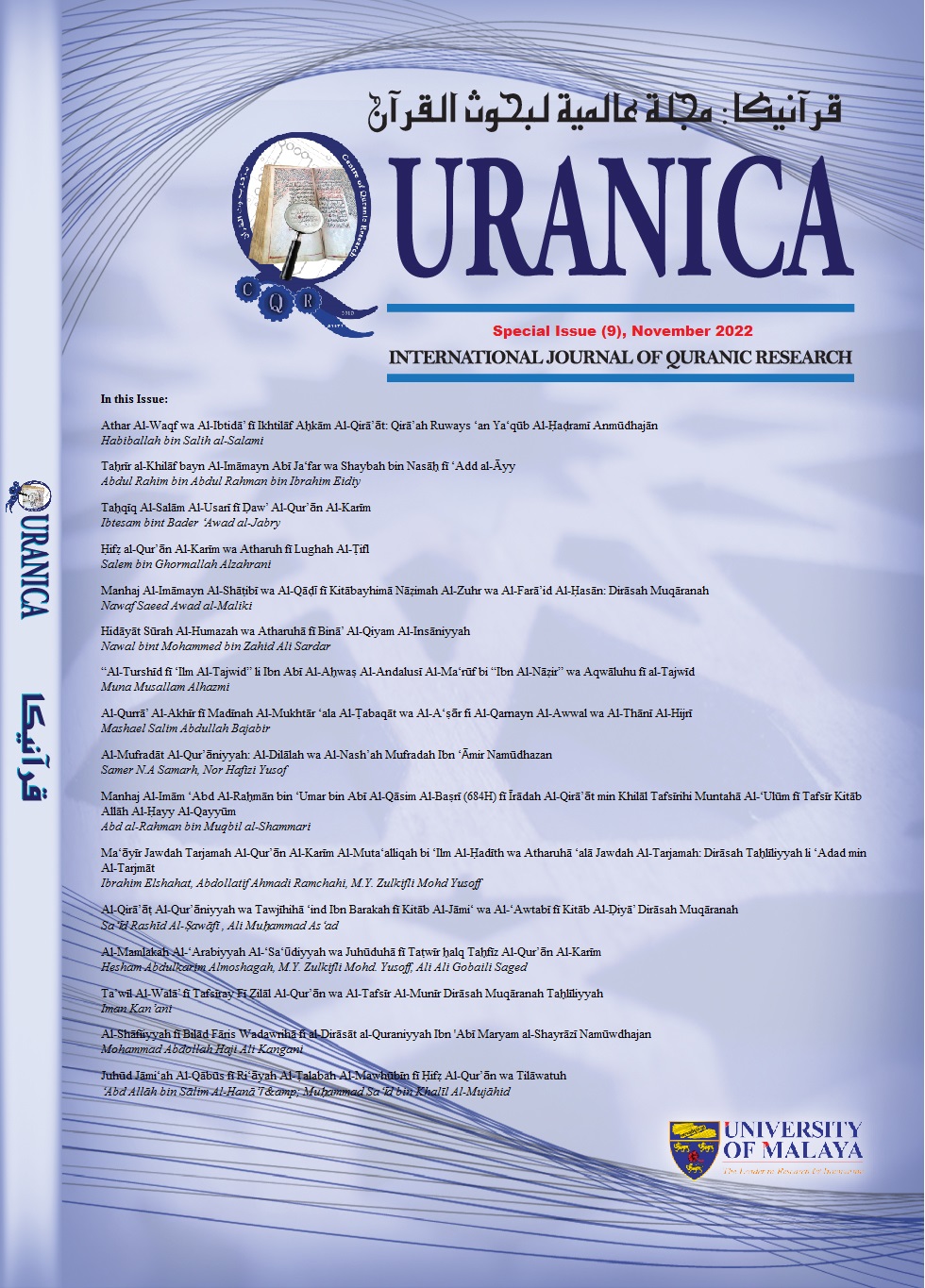Al-Qirā’āṭ Al-Qur’āniyyah wa Tawjīhihā ‘ind Ibn Barakah fī Kitāb Al-Jāmi‘ wa Al-‘Awtabī fī Kitāb Al-Ḍiyā’ Dirāsah Muqāranah
Main Article Content
Abstract
This study aimed to demonstrate the interest of Ibn Barakah (s. 4 AH) and Al-‘Awtabī (s 6 AH) with Quranic readings and it guidance, and to highlight their mastery in this science through their analysis and guidance of the readings, and inferred in explaining the Qur’anic meanings, and weighting the jurisprudential sayings. The study also shows the interest of some Omani scholars in this science. The study relied on the inductive approach in tracing and extracting the locations of the readings, and the descriptive approach in explaining Ibn Baraka and Al-Awtabi's handling of the readings and their guidance. The most important findings of the study; that Ibn Barakah and Al-‘Awtabī both employed Quranic readings in explaining the meanings of the Qur’anic vocabulary, or a statement of the rulings of jurisprudence, and combining two different rulings with a total of the two readings, but Al-‘Awtabī was more revenue-reading than Ibn Barakah, so he employed the readings in a statement of the Arabic pronunciation of the Qur’anic word, and the statement of the multiplicity of meanings by the multiplicity of reading, and clarifying the ambiguous, and responding to the ambiguous or illusory contradiction, and he was also meant by directing the readings. The two scholars participated in not distinguishing between correct reading and abnormal reading.
Downloads
Article Details
Disclaimer
QURANICA makes every effort to ensure the accuracy of all its contents. However, opinions, discussions, views and recommendations are expressed in this journal do not necessarily reflect the official policy of QURANICA or views of its editors or publishers. Therefore, QURANICA and its publishers will not be liable for any controversy may be arisen. The journal reserves the right, at its sole discretion, to change its terms and conditions of publications.
Copyright
It is a condition of publication that manuscript submitted to the journal have not been published, accepted for publication, nor simultaneously submitted for publication elsewhere. By submitting a manuscript, the author(s) agrees that copyright for the article is transferred to the publisher, if and when the manuscript is accepted for publication.
